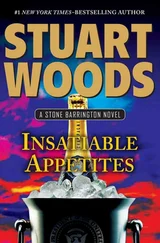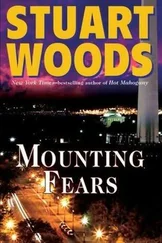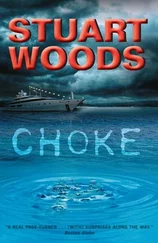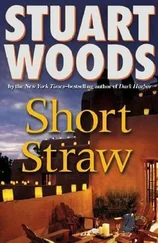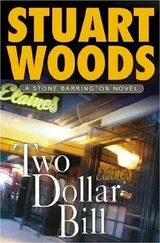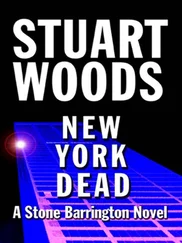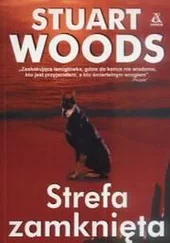“You still haven’t told me why you think Angelo Farina painted the supposed van Gogh.”
“Angelo lived about two hundred yards from Mark Tillman’s house in the Hamptons.”
“So they were friends?”
“They were. Mark would go over to Angelo’s studio and watch him paint. I believe that Mark, over time, concocted the story of the painting and asked Angelo to paint it for him. If that is so, then he probably faked the theft of his painting for the insurance.”
“Could Angelo paint in the style of van Gogh?”
“Angelo could paint in any style. He needed only a picture to copy. In this case he would probably have looked at several photographs of van Goghs in museums, then copied his style and brushstrokes. And that is what makes it so difficult to deny that the picture is a fraud — it is not a copy of anything, so no direct comparisons can be made.”
“But there are differences between old and new paints and canvases. Surely that would have been checked.”
“Of course, but Angelo is highly expert at using old materials and paints.” Steele opened his briefcase and handed Stone a book, entitled Art for Art’s Sake . “He explains his techniques in his autobiography. I think you’ll find it interesting. For instance, he will buy a cheap painting from the period in question, remove the oil paint from the canvas, apply a gesso, or primer coat, of his own invention, which is made of ingredients that cannot be dated. Then he uses his own paints or old ones, the formulas of which have not changed for centuries. He has special techniques for aging the finished painting — like baking it in the sun for days to produce the cracks associated with age, and even adding what appear to be fly specks, which are common on old paintings. He uses pieces of old wood from period furniture for the backings, and he has a large collection of period frames. The results are masterful.” Arthur went back into his briefcase and came out with an 8x10-inch color transparency. “This was taken by our expert during the examination, in sunlight.”
Stone’s breath was slightly taken away. “This is glorious,” he said.
“All of Angelo’s work, that we’ve actually seen, has been glorious,” Arthur said. “The FBI has quite a collection of his, ah, works, but of course they can’t prove that he painted any of them.”
“This is all very intriguing,” Stone said.
“One more thing, and this happened when I was present as the experts were examining Mark’s picture. The man from the Van Gogh Museum wanted to clean a small area of the painting to see what might be underneath more than a century of dust and dirt. He had brought acetone, the best cleaner, with him, but Mark would not allow him to use it, saying that it might damage the painting. Instead, he offered the man a bottle of mineral spirits, which would clean the picture fairly well without damaging it. You see, the varnish on paintings hardens very slowly, over a period of decades, to the point where it will not be harmed by acetone, and even Angelo has not been able to replicate this characteristic, so he can’t allow acetone to be used.”
“Very clever of him.”
“And very necessary. I’ve heard of a case where a man bought an old and expensive picture at auction, and when he got it home and tried to clean it with acetone, it melted. It seems obvious, after the fact, that it was a contemporary forgery.”
“This is all very interesting, Arthur,” Stone said, “but I still don’t know what you want from me.”
“Simple. I want you to find the picture and bring it to me so that I can have it cleaned with acetone. Then I will know, one way or another, if it is a genuine van Gogh, and I can pay or deny payment, as is appropriate.”
“Simple? The NYPD and the FBI have already failed to find it, but you expect that I can?”
“But you have something they don’t, Stone.”
“And what is that?”
“Access to Morgan Tillman — perhaps even her trust. That is why I am prepared to offer you a finder’s fee, for the recovery of the painting, of twenty percent.”
“Twenty percent of what?”
“Forty million dollars.”
“But you have insured it for sixty million, Arthur.”
“Oh, all right,” Steele said grumpily, “twenty percent of sixty million dollars.” Steele opened his briefcase and extracted one of two identical envelopes. “And here is a letter to that effect — a contract, if you like.”
Stone opened the unsealed envelope and read the letter inside. “You have neglected to sign it, Arthur.”
Steele took the letter from him, signed it with a flourish, and handed it back. “There you are.”
“I expect the other envelope contains a letter mentioning forty million,” Stone said.
“That’s neither here nor there,” Steele replied, offering his hand. “Do we have a deal?”
Stone shook it. “How long do I have?”
“Two weeks from today, at noon,” Steele said. “It must be in my hands by then to have time for it to be reexamined.”
Stone put the letter back into its envelope and tucked it into the inside pocket of his jacket. “I’ll be in touch,” he said. Then he stopped for a moment. “You realize, Arthur,” he said, “that if you’re wrong about this, the picture is the very last one painted by van Gogh.”
Steele made a little groaning noise.
Stone went back to his office and said to Joan, “Send two dozen yellow roses to Morgan Tillman, at 740 Park Avenue.”
“Gotcha, boss.” Joan leered.
“Immediate delivery, please.”
“But of course.”
Stone called Dino.
“Bacchetti.”
“Hey. Were you at the Tillman house when it was searched?”
“Most of the time,” Dino replied.
“Did you order the search?”
“Yes.”
“What were you searching for?”
“Signs of a burglar — prints, DNA, whatever we could get.”
“Did you tell your people to search for the stolen painting?”
“I don’t think so. We thought it was stolen, so it wouldn’t still be there.”
“Did you have your art squad on the premises?”
“They came in after I was gone.”
“What were they doing there?”
“The art squad always goes in after the theft of a picture or sculpture or valuable book — things like that.”
“And what do they do during their visit?”
“They affirm that the stolen object is absent from its usual place. They look for evidence of a modus operandi of the thief and compare it to what they know about others. Did he jimmy a window? Knock down a door? Or just pick the lock and walk in through the front door?”
“Who runs the squad?”
“Arturo Masi — called Art, appropriately enough. An Italian, of course.”
“Of course.”
“He’s an expert on everything.”
“Except things he hasn’t seen,” Stone said.
“Huh?”
“He didn’t see the van Gogh — it was gone.”
“Oh, yeah.”
“I’d like to talk to him.”
“On the phone or in person?”
“In person, in my office, if possible.”
“He’ll give you a call,” Dino said.
“Thanks. See ya.” Stone hung up.
Seven minutes later, Joan buzzed. “Art Masi on one.”
Stone picked up the phone. “Mr. Masi?”
“Art. The commissioner would like me to come and see you. When’s good?”
“Anytime today.”
“How about in five minutes? I’m in your neighborhood.”
Stone gave him the exact address and told him to come ahead.
Art Masi was tall, solidly built, and handsome, with thick salt-and-pepper hair brushed straight back, leaving a prominent widow’s peak and olive — or maybe just tanned — skin. He was sharply dressed in a handmade Italian suit. Stone wondered how he could afford it on a policeman’s salary.
Читать дальше

